Intro
Eating a low-sodium diet is crucial for maintaining good health, particularly for individuals with high blood pressure, heart disease, or kidney disease. Consuming high amounts of sodium can lead to fluid retention, swelling, and cardiovascular problems. The American Heart Association recommends that adults limit their daily sodium intake to less than 2,300 milligrams. However, the ideal limit is even lower, at 1,500 milligrams per day, for those who are at risk for high blood pressure or heart disease. With so many foods being high in sodium, it can be challenging to make informed choices. In this article, we will explore the importance of low-sodium foods and provide a comprehensive guide to help you make healthier choices.
A low-sodium diet is not just about reducing salt intake; it's also about incorporating foods that are naturally low in sodium. Fresh fruits, vegetables, whole grains, and lean proteins are all excellent options. These foods are not only low in sodium but also rich in essential nutrients, fiber, and antioxidants. By focusing on whole, unprocessed foods, you can significantly reduce your sodium intake and improve overall health. Moreover, a low-sodium diet can help reduce blood pressure, decrease the risk of heart disease, and even aid in weight management.
Incorporating low-sodium foods into your diet can be easier than you think. With a little planning and creativity, you can create delicious and healthy meals that are low in sodium. From hearty soups to flavorful stir-fries, there are countless ways to prepare low-sodium dishes. Additionally, many food manufacturers are now offering low-sodium alternatives to popular products, making it easier to find healthy options at the grocery store. By making a few simple changes to your diet, you can significantly reduce your sodium intake and improve your overall health.
Benefits of Low Sodium Foods
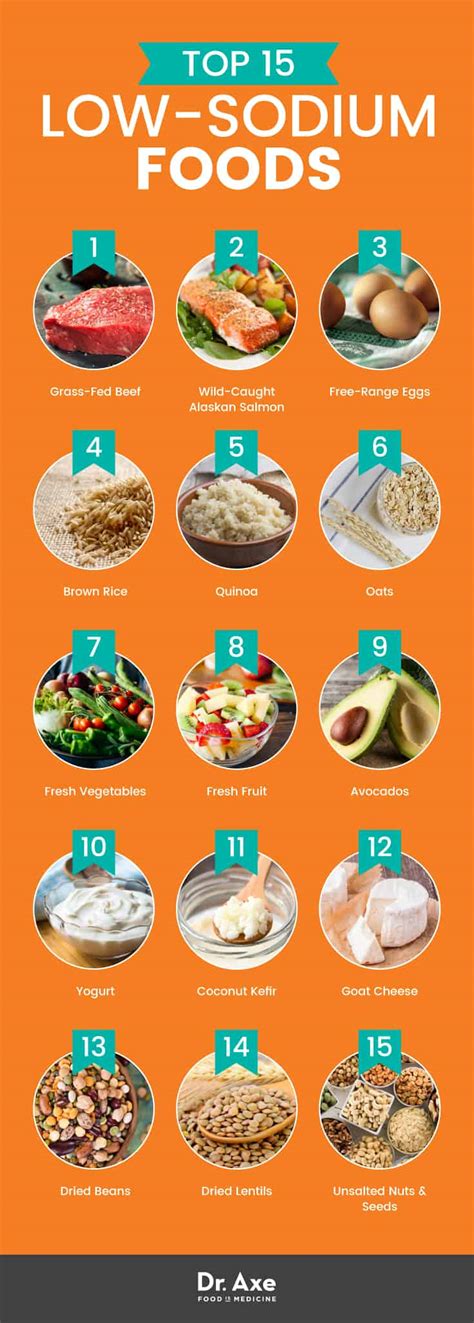
Reducing Blood Pressure
High blood pressure is a significant risk factor for heart disease, stroke, and kidney disease. Eating a low-sodium diet can help reduce blood pressure by decreasing the amount of fluid in the blood vessels and reducing the strain on the heart. The American Heart Association recommends that adults with high blood pressure aim to reduce their sodium intake to less than 1,500 milligrams per day. By making this simple change, you can significantly reduce your risk of developing cardiovascular disease.Decreasing the Risk of Heart Disease
Heart disease is one of the leading causes of death worldwide. Consuming high amounts of sodium can increase the risk of heart disease by raising blood pressure, damaging blood vessels, and altering lipid profiles. A low-sodium diet, on the other hand, can help reduce the risk of heart disease by lowering blood pressure, improving lipid profiles, and reducing inflammation. By incorporating more low-sodium foods into your diet, you can take a proactive approach to maintaining good heart health.Low Sodium Food Options
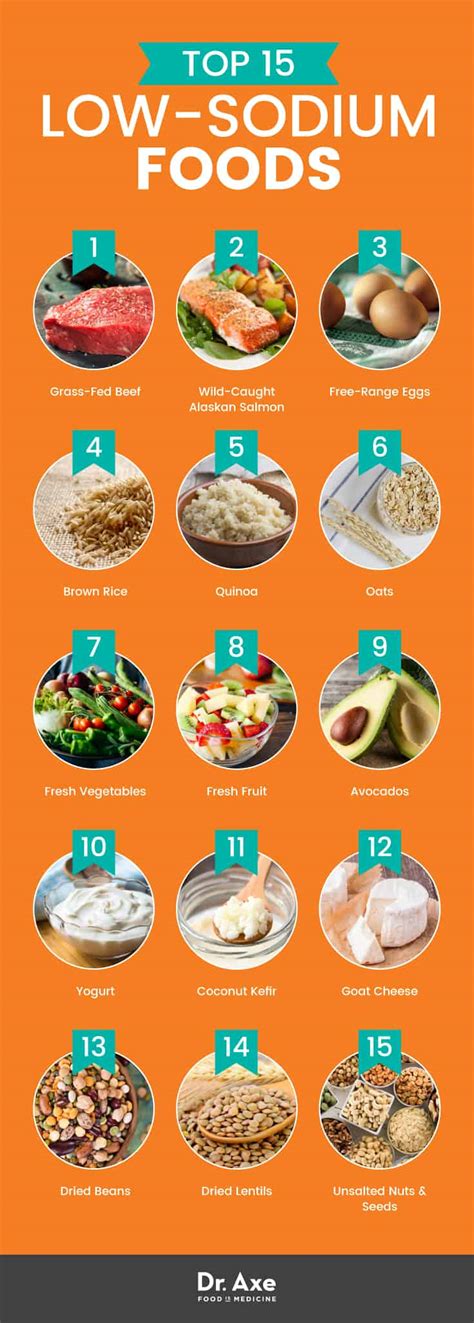
Fresh Fruits
Fresh fruits are some of the best low-sodium food options available. They are not only low in sodium but also rich in essential nutrients, fiber, and antioxidants. Some of the best fresh fruits for a low-sodium diet include: * Apples: 0 milligrams of sodium per medium-sized fruit * Bananas: 1 milligram of sodium per medium-sized fruit * Berries: 1-2 milligrams of sodium per 1/2 cupLeafy Green Vegetables
Leafy green vegetables are another excellent low-sodium food option. They are rich in essential nutrients, fiber, and antioxidants, and are very low in sodium. Some of the best leafy green vegetables for a low-sodium diet include: * Spinach: 2 milligrams of sodium per 1 cup cooked * Kale: 2 milligrams of sodium per 1 cup cooked * Collard greens: 2 milligrams of sodium per 1 cup cookedLow Sodium Meal Ideas
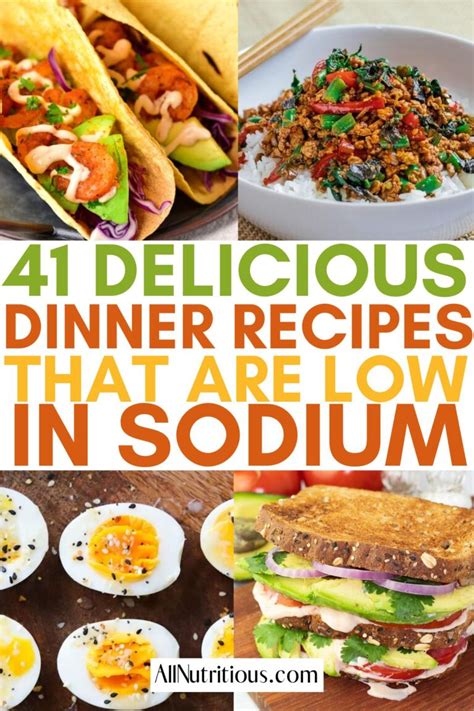
Breakfast Ideas
Starting your day with a low-sodium breakfast can help set you up for success. Some delicious and healthy low-sodium breakfast ideas include: * Oatmeal with fruit and nuts * Scrambled eggs with spinach and whole-grain toast * Greek yogurt with berries and granola * Smoothie bowl with frozen fruit, yogurt, and whole-grain cereal * Avocado toast with scrambled eggs and cherry tomatoesLunch Ideas
Packing a low-sodium lunch can be easy and convenient. Some delicious and healthy low-sodium lunch ideas include: * Grilled chicken breast with mixed greens and whole-grain wrap * Lentil soup with whole-grain bread and a side salad * Turkey and avocado wrap with mixed greens and whole-grain tortilla * Quinoa salad with roasted vegetables and lean turkey * Grilled cheese sandwich with tomato soup and a side saladTips for Reducing Sodium Intake
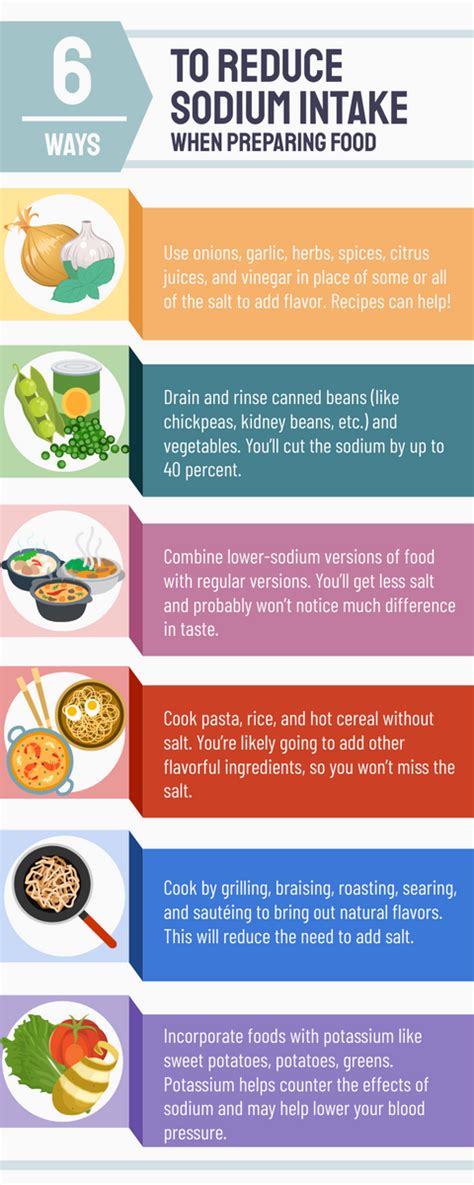
Reading Food Labels
Reading food labels carefully is one of the most effective ways to reduce sodium intake. When shopping for groceries, be sure to check the nutrition label for sodium content. Choose products that are low in sodium, and opt for products that are labeled as "low-sodium" or "no-salt-added."Choosing Low-Sodium Products
Choosing low-sodium products is another effective way to reduce sodium intake. Many food manufacturers now offer low-sodium alternatives to popular products. When shopping for groceries, look for products that are labeled as "low-sodium" or "no-salt-added."Conclusion and Next Steps
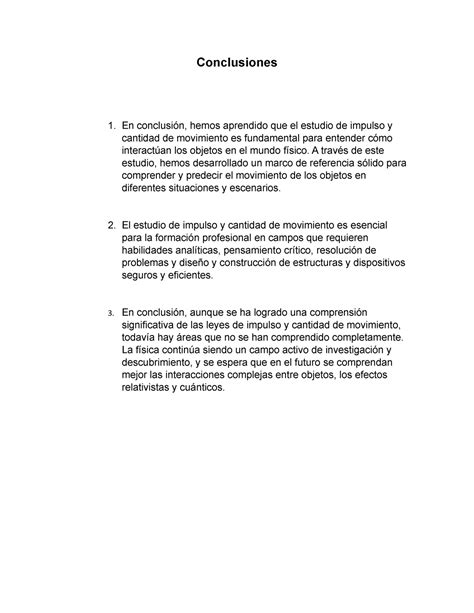
We invite you to share your favorite low-sodium recipes, ask questions, or provide feedback on this article. Your engagement will help us create more informative and helpful content for our readers. Please feel free to comment below, and don't forget to share this article with your friends and family who may benefit from this information.
What is the recommended daily intake of sodium?
+The American Heart Association recommends that adults limit their daily sodium intake to less than 2,300 milligrams. However, the ideal limit is even lower, at 1,500 milligrams per day, for those who are at risk for high blood pressure or heart disease.
What are some low-sodium food options?
+Some low-sodium food options include fresh fruits, leafy green vegetables, whole grains, lean proteins, and low-fat dairy products. Herbs and spices can also be used to add flavor to food without adding sodium.
How can I reduce my sodium intake?
+Reducing sodium intake can be achieved by reading food labels carefully, choosing low-sodium products, cooking from scratch, using herbs and spices for flavor, and limiting processed and packaged foods.
